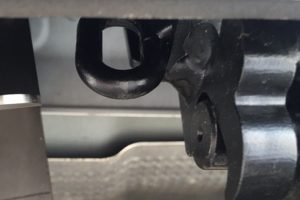Different trailer types for the trailer drive

Each trailer type has a specific purpose and has special specifications. At the same time, not all trailer types are compatible with a trailer coupling, such as a semi-trailer. So that you can still keep track of the different types, we have put together the three most common trailer types for you. As a rule, a distinction based on the design is used for the various trailer types.
What actually defines a trailer?
A trailer is defined as a vehicle that has a loading area but no drive of its own and is connected to a towing vehicle using a drawbar. A distinction is made between the following three basic designs: rigid drawbar trailer, articulated drawbar trailer and semitrailer.
The rigid drawbar trailer
A rigid drawbar trailer is always used when the connection between the towing vehicle and the trailer, i.e. the drawbar, is rigid. This type of construction is the most common, most of the trailers in daily use follow this type of construction. Trailers of this type usually have one or two axles. The axles are also rigid and not steerable.
Rigid drawbar trailers up to 750 kg are so-called “light” trailers and can be used without their own brake. If the trailer is heavier then overrun brakes are required on the trailer. If the total permissible total weight is over 3.5 tons, a continuous breaking system must be installed. For most of the above mentioned scenarios trailers which are rigid drawbar trailers are used.
The articulated drawbar trailer
The articulated drawbar trailer differs from the rigid drawbar trailer due to its two or more steerable axles. This steering is mostly based on a turntable steering, a so-called king pin is installed as a central joint and enables the trailer to pivot. As a rule, such trailers are not used on most cars. Instead, they are increasingly being used with trucks or tractors, since as a two-axle vehicle they can weigh up to 20 tons in total. With a three-axle vehicle the total weight is already 24 tons.
The semitrailer
Most people will know this trailer as an artculated lorry. The semi-trailer has no drawbar and is not one of the classic trailers for cars. It is usually used on trucks, and the special connection construction between the semi-trailer and ist traction engine enables it to be moved in all directions.
Read more about driving a trailer in our blog post.


 Of course, before you retrofit a trailer hitch, you first have to determine whether your car has ever been designed to travel with the trailer and is approved as a towing vehicle. You can find all the information you need on the nameplate of the vehicle. The data are both in the service booklet and usually on a sticker that is housed in the spare wheel module. If it can not be found there, you will find information in the owner’s manual of the vehicle on where to findyour nameplate. In addition to the vehicle manufacturer and the approval number, the chassis number can also be found there. The second line also specifies technically permissible weights. Underneath you will also find the permissible trailer weight.
Of course, before you retrofit a trailer hitch, you first have to determine whether your car has ever been designed to travel with the trailer and is approved as a towing vehicle. You can find all the information you need on the nameplate of the vehicle. The data are both in the service booklet and usually on a sticker that is housed in the spare wheel module. If it can not be found there, you will find information in the owner’s manual of the vehicle on where to findyour nameplate. In addition to the vehicle manufacturer and the approval number, the chassis number can also be found there. The second line also specifies technically permissible weights. Underneath you will also find the permissible trailer weight. In Germany there are many different license classes, among these are also some that regulate and influence driving with a trailer. We had a look at the different licenses and summarized the key data for you. A distinction is made between the driving license class 3, class B, class B96 and class BE.
In Germany there are many different license classes, among these are also some that regulate and influence driving with a trailer. We had a look at the different licenses and summarized the key data for you. A distinction is made between the driving license class 3, class B, class B96 and class BE.



